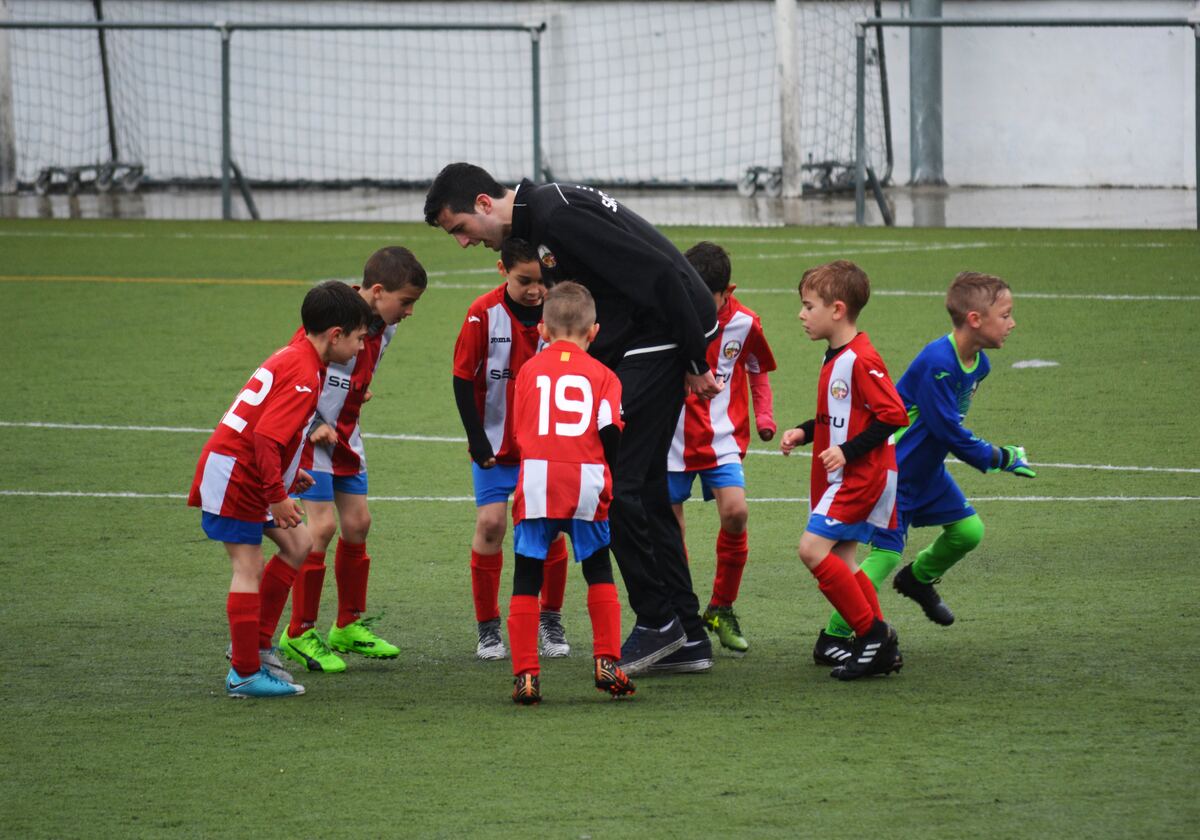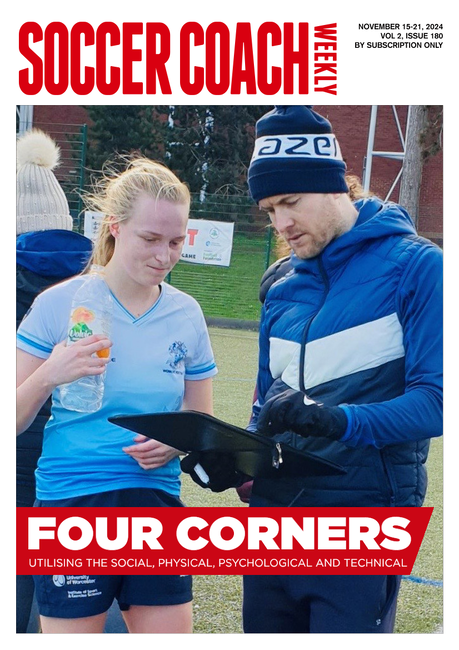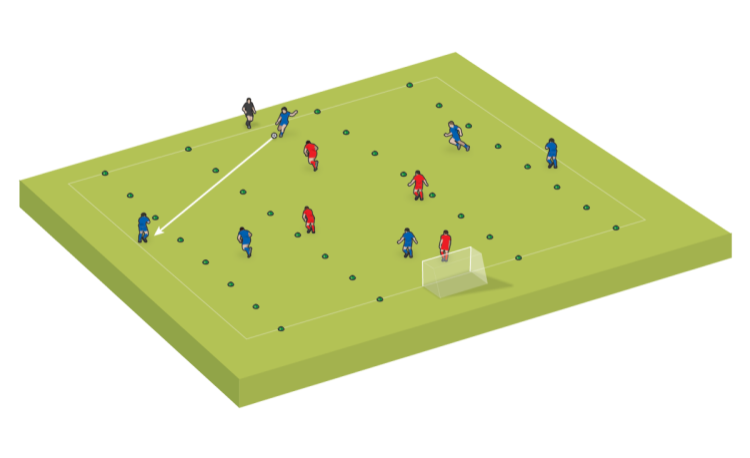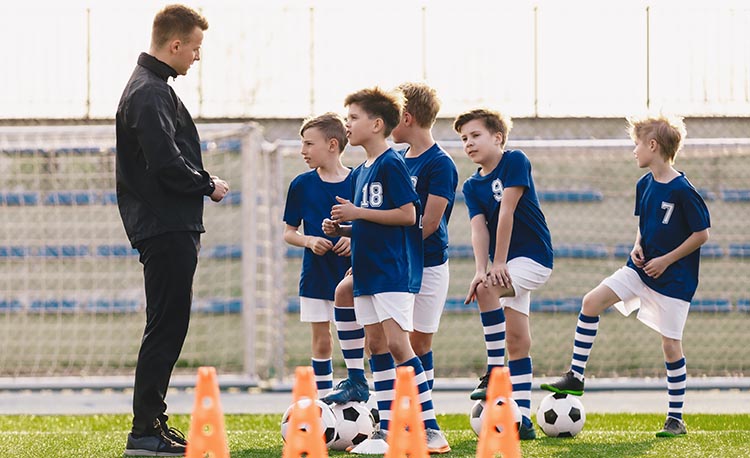How to make use of adaptive games
Here’s a practical guide to using adaptive games in training to accelerate your players’ decision making. It’s not just about setting up a game and then sitting back. You need a clear plan to help make the most of this powerful tool.
Adaptive games are training games where you, or your players, can easily change the rules to bring in different challenges.
With an adaptive game you can quickly change it up so that the challenge is increased or reduced or changed altogether. You don’t have to stop everything, tear apart your playing area and set it all up again.
Adaptive games allow players to explore different ways to win a game, through good decision making and skill execution. Research says they will improve players’ learning outcomes, leading to great transfer into matches.
These tips will help you get the best out of adaptive games in your sessions.
MAKE IT ABOUT WINNING
While all games are really about developing, no game is worth playing unless there’s some frustrations if you don’t win.
The mantra should be win or learn. It’s never about losing. If the players “lose”, and then don’t want to win the next game, they won’t be looking for ways to improve.
Keep asking them how they can win the game. Also, ask them to look at how the other team won. What could they mimic? Or what could prevent the opposition from winning?
MORE THAN ONE WAY TO WIN
The best games can be won in lots of ways. Some of them might be ones you don’t expect. A simple 2v1 requires perhaps only one decision. How can you change that 2v1, so the players can win by not just dribbling and passing?
RUN THE GAME, NOT THE TEAMS
During the games, you should resist giving any tactical clues. You should only referee the game. Though praise can be important, don’t say too much of this either. Let your silence allow the players find their own solutions.
Your interventions might be to suggest ideas for better skill execution. These won’t be new techniques, just reminders of what you’ve covered already.
PATIENCE
You can easily run the same game with two groups in the same session and get very different developments. Be patient with groups that don’t progress as fast. The reason they need time is that they aren’t mentally in the right place, or haven’t assimilated the skills in the same way as others.
Avoid adapting the game to make it easier. Just recognise that some teams will play out 0-0 draw while others might be involved in a 6-4 bonanza!
REDUCE THE RULES
The simpler the game, the easier it is to play, and the more chance the players will be developing their skills and tactical awareness. Avoid complicated scoring systems so players can quickly grasp what they need to do.
Over time, if you’ve played the game several times, you can add in more rules. For example, play the game you played last week. Play it for two minutes, and then add a rule.
PLAY IT AGAIN
The best games are the ones you play again. Try a new game for a short time one week, and then play it again next time. The players will be immediately thinking of ways to win based on their experiences last time. This is powerful learning, because it builds on previous experiences.
DIFFERENTIATE THROUGH CHALLENGES
Some players will shine in training games and potentially dominate. Rather than handicap them, set them challenges.
Perhaps you can offer additional points for a particular skill. These additional points are available to every player.
Alternatively, you might suggest challenges you would like the better player to complete. For example, "see if you can recycle the ball using a maximum of three touches". Or you can make this a challenge between two players.
KEEPY-UPPY V TOTAL WAR
Not all adaptive games need large numbers.
You can play 1 v 1 games, such as dribbling to beat a player. Two v two games might involve end zones or goals.
WHEN THE FUN STOPS, STOP
How long should you play an adaptive game? It’s often down to conditioning. Young players can’t run and run. They need breaks. Play in bursts, rest and then play again.
Then judge the mood. Don’t think you need to have reached a defined outcome. Sometimes the best games finish earlier, with the players wanting one more go.
BEST OF RULE CHANGES
If the players are involved in developing the game, they take ownership. However, especially with younger players, rule change suggestions can be a little too wild or silly.
You can use a “shout out” type system to help your filter the rules. You say, “I’ve got a new rule in mind. Shout out your ideas, and if they are better, then we might use that one instead”.
Related Files
Newsletter Sign Up
Coaches Testimonials

Gerald Kearney, Downtown Las Vegas Soccer Club

Paul Butler, Florida, USA

Rick Shields, Springboro, USA

Tony Green, Pierrefonds Titans, Quebec, Canada
Subscribe Today
Discover the simple way to become a more effective, more successful soccer coach
In a recent survey 89% of subscribers said Soccer Coach Weekly makes them more confident, 91% said Soccer Coach Weekly makes them a more effective coach and 93% said Soccer Coach Weekly makes them more inspired.
*includes 3 coaching manuals
Get Weekly Inspiration
All the latest techniques and approaches
Soccer Coach Weekly offers proven and easy to use soccer drills, coaching sessions, practice plans, small-sided games, warm-ups, training tips and advice.
We've been at the cutting edge of soccer coaching since we launched in 2007, creating resources for the grassroots youth coach, following best practice from around the world and insights from the professional game.







